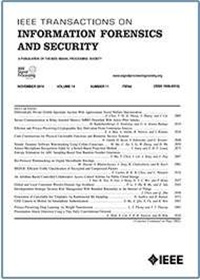ADDR: Anomaly Detection and Distortion Restoration for 3D Adversarial Point Cloud
IF 8
1区 计算机科学
Q1 COMPUTER SCIENCE, THEORY & METHODS
IEEE Transactions on Information Forensics and Security
Pub Date : 2025-09-08
DOI:10.1109/TIFS.2025.3607243
引用次数: 0
Abstract
The growing adoption of 3D point cloud in applications like autonomous driving has heightened concerns about their vulnerability to adversarial attacks. Existing defense methods face two fundamental challenges: ineffective detection of imperceptible adversarial examples and poor restoration of severely distorted point cloud. In this paper, we present ADDR, an end-to-end defense framework that integrates Binary Geometric Feature Anomaly Detection (BGFAD) and Distorted point cloud Restoration (DPCR). BGFAD employs a dual threshold mechanism combining global distance statistics and local curvature analysis to detect both substantial and imperceptible adversarial perturbations. DPCR leverages attention enhanced feature encoding to reconstruct missing geometric structures while preserving semantic integrity through bidirectional Chamfer loss optimization. Our framework uniquely bridges traditional geometric priors with deep learning mechanisms, achieving attack-agnostic defense without classifier retraining. Extensive experiments on ModelNet40, ShapeNet and ScanObjectNN datasets demonstrate state-of-the-art performance, with about 12% higher robustness against structural attacks and三维对抗点云的异常检测和畸变恢复
在自动驾驶等应用中越来越多地采用3D点云,这加剧了人们对它们容易受到对抗性攻击的担忧。现有的防御方法面临着两个根本性的挑战:对难以察觉的对抗样本的无效检测和对严重扭曲的点云的不良恢复。在本文中,我们提出了ADDR,一个集成了二进制几何特征异常检测(BGFAD)和扭曲点云恢复(DPCR)的端到端防御框架。BGFAD采用双阈值机制,结合全局距离统计和局部曲率分析来检测重大和不可察觉的对抗性扰动。DPCR利用注意力增强特征编码来重建缺失的几何结构,同时通过双向倒角损失优化来保持语义完整性。我们的框架独特地将传统的几何先验与深度学习机制连接起来,在不需要分类器再训练的情况下实现攻击不可知论防御。在ModelNet40、ShapeNet和ScanObjectNN数据集上进行的大量实验证明了最先进的性能,对结构攻击的鲁棒性提高了约12%,恢复保真度比现有方法提高了6倍。ADDR保持实时处理能力,同时将对抗成功率降低到https://github.com/whwh456/ADDR
本文章由计算机程序翻译,如有差异,请以英文原文为准。
求助全文
约1分钟内获得全文
求助全文
来源期刊

IEEE Transactions on Information Forensics and Security
工程技术-工程:电子与电气
CiteScore
14.40
自引率
7.40%
发文量
234
审稿时长
6.5 months
期刊介绍:
The IEEE Transactions on Information Forensics and Security covers the sciences, technologies, and applications relating to information forensics, information security, biometrics, surveillance and systems applications that incorporate these features
 求助内容:
求助内容: 应助结果提醒方式:
应助结果提醒方式:


